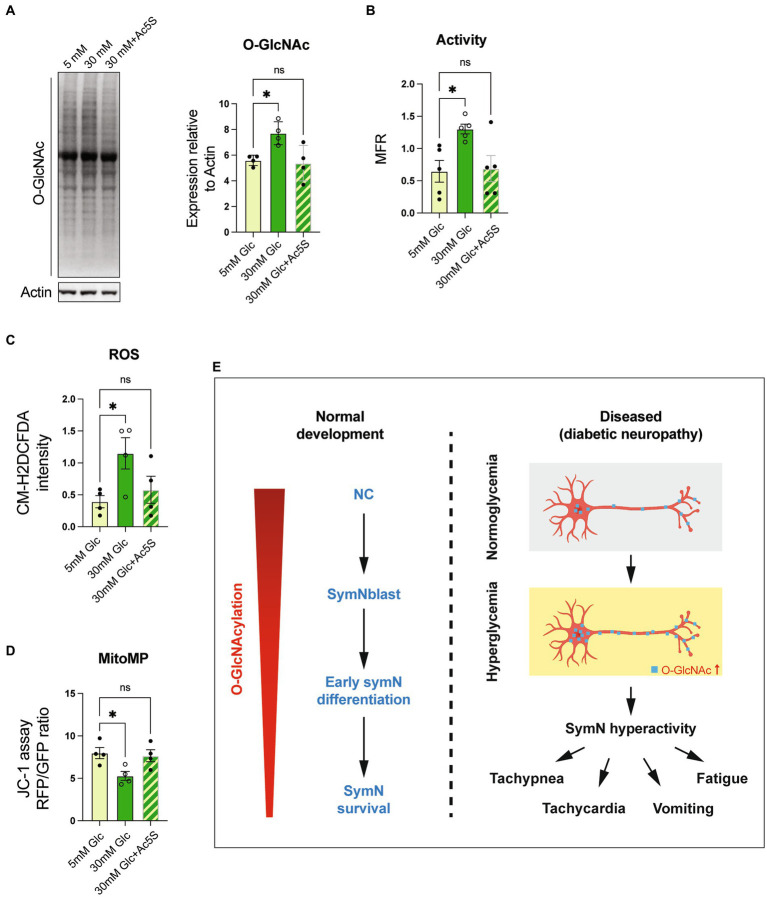Figure 6.
O-GlcNAcylation inhibition rescues symN hyperactivity in high glucose. (A) Western blot analysis for O-GlcNAc. One-way ANOVA followed by Dunnett’s multiple comparisons. n = 4 biological replicates. (B) MEA analysis of symN activity overtime after Ac5S treatment. One-way ANOVA followed by Dunnett’s multiple comparisons. n = 5 biological replicates. (C) ROS level of symNs assessed by CM-H2DCFDA. One-way ANOVA followed by Dunnett’s multiple comparisons. n = 5 biological replicates. (D) Mitochondrial membrane potential of symNs assessed by JC-1 assay. One-way ANOVA followed by Dunnett’s multiple comparisons. n = 4 biological replicates. (E) Summary of the roles of O-GlcNAcylation in symNs. Left: During normal symN development, O-GlcNAcylation governs neural crest (NC) induction, sympathetic neural blast (symNblast) fate determination, symN growth and survival. The level of O-GlcNAcylation decreases gradually along with symN differentiation, but still remains and is important for differentiated symNs. Right: In our in vitro model that mimics hyperglycemia in T2DM patients, O-GlcNAcylation increases, which hyperactivates symNs that might contribute to the metabolic and cardiovascular symptoms in the patients. *p < 0.05, Error bars represent SEM.

